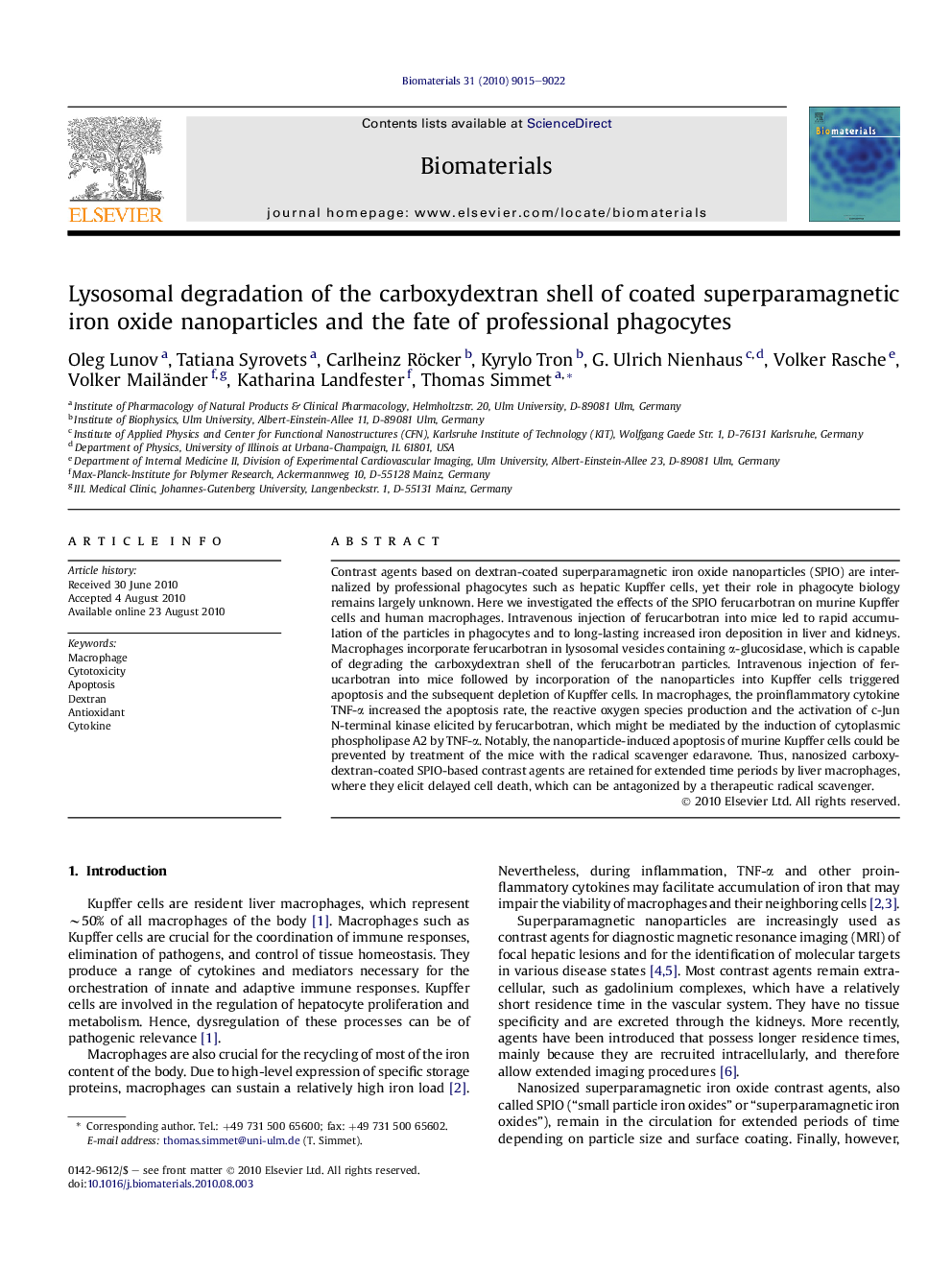| کد مقاله | کد نشریه | سال انتشار | مقاله انگلیسی | نسخه تمام متن |
|---|---|---|---|---|
| 8748 | 604 | 2010 | 8 صفحه PDF | دانلود رایگان |

Contrast agents based on dextran-coated superparamagnetic iron oxide nanoparticles (SPIO) are internalized by professional phagocytes such as hepatic Kupffer cells, yet their role in phagocyte biology remains largely unknown. Here we investigated the effects of the SPIO ferucarbotran on murine Kupffer cells and human macrophages. Intravenous injection of ferucarbotran into mice led to rapid accumulation of the particles in phagocytes and to long-lasting increased iron deposition in liver and kidneys. Macrophages incorporate ferucarbotran in lysosomal vesicles containing α-glucosidase, which is capable of degrading the carboxydextran shell of the ferucarbotran particles. Intravenous injection of ferucarbotran into mice followed by incorporation of the nanoparticles into Kupffer cells triggered apoptosis and the subsequent depletion of Kupffer cells. In macrophages, the proinflammatory cytokine TNF-α increased the apoptosis rate, the reactive oxygen species production and the activation of c-Jun N-terminal kinase elicited by ferucarbotran, which might be mediated by the induction of cytoplasmic phospholipase A2 by TNF-α. Notably, the nanoparticle-induced apoptosis of murine Kupffer cells could be prevented by treatment of the mice with the radical scavenger edaravone. Thus, nanosized carboxydextran-coated SPIO-based contrast agents are retained for extended time periods by liver macrophages, where they elicit delayed cell death, which can be antagonized by a therapeutic radical scavenger.
Journal: Biomaterials - Volume 31, Issue 34, December 2010, Pages 9015–9022